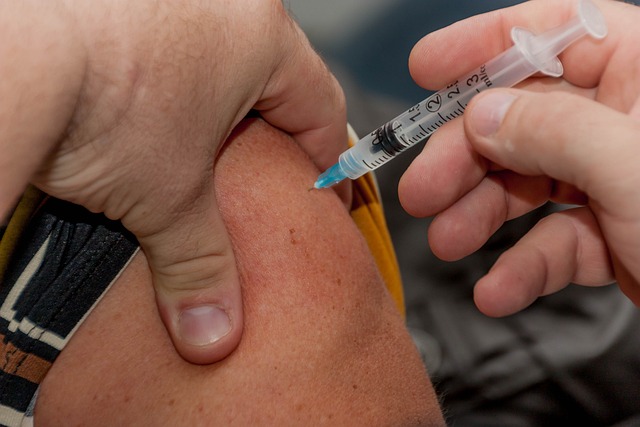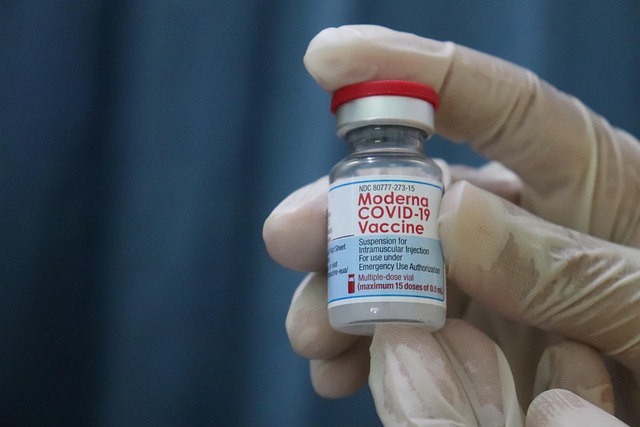Vaccines have revolutionized modern medicine, preventing millions of deaths each year from deadly infectious diseases. But how do vaccines work? What happens inside the body when we get vaccinated? And why are vaccines considered one of the most effective tools in public health?
In this article, we’ll explore how vaccines work, the different types of vaccines, and the science behind your immune system’s response — all based on verified, research-backed facts. Whether you’re a student, parent, or simply curious about health, this guide will give you a clear and accurate understanding of vaccines and their crucial role in disease prevention.

What Is a Vaccine?
A vaccine is a biological preparation that trains the immune system to recognize and fight specific pathogens, such as viruses or bacteria, without causing the disease itself.
Vaccines usually contain:
Antigens: Parts of the pathogen (like proteins or sugars) that trigger an immune response.
Adjuvants (in some vaccines): Substances that enhance the immune response.
Preservatives/Stabilizers: Ensure vaccine safety and longevity.
When introduced into the body, vaccines simulate an infection, allowing your immune system to prepare its defenses for future encounters with the actual pathogen.
The Immune System: Your Body’s Defense System
Your immune system is a complex network of cells, tissues, and organs that work together to defend the body from harmful invaders.
There are two main types of immunity:
Innate Immunity: The first line of defense. It’s non-specific and responds quickly to pathogens.
Adaptive Immunity: A more specific response that develops over time. It involves:
B cells, which produce antibodies.
T cells, which kill infected cells and help coordinate the immune response.
Vaccines primarily engage the adaptive immune system, creating memory cells that remain in the body and recognize the pathogen if you’re exposed again — often for years or a lifetime.
How Vaccines Work
Vaccines mimic infection and stimulate the adaptive immune system. Here’s what happens in simple steps:
1. Introduction of Antigen
When a vaccine is administered, it introduces harmless antigens from the pathogen into the body.
2. Immune Response Activation
The immune system identifies the antigen as foreign and activates:
B cells, which produce antibodies that bind to and neutralize the antigen.
T cells, which destroy infected cells and assist in the immune response.
3. Creation of Memory Cells
After the immune response, the body creates memory B and T cells that “remember” the pathogen.
4. Rapid Response to Future Exposure
If the actual pathogen enters the body later, the immune system recognizes it quickly and mounts a stronger, faster attack — often neutralizing the invader before symptoms appear.
Types of Vaccines
There are several types of vaccines, each using a different method to introduce antigens safely:
1. Live Attenuated Vaccines
These contain a weakened form of the virus or bacteria.
Example: Measles, Mumps, and Rubella (MMR) vaccine.
Pros: Strong, long-lasting immunity.
Cons: Not suitable for immunocompromised individuals.
2. Inactivated Vaccines
These use a killed version of the pathogen.
Example: Polio (IPV) vaccine.
Pros: Very safe.
Cons: May require booster shots.
3. Subunit, Recombinant, Polysaccharide, and Conjugate Vaccines
These use specific pieces of the pathogen (like protein or sugar).
Example: HPV vaccine, Hib vaccine.
Pros: Targeted immune response with fewer side effects.
4. Toxoid Vaccines
These protect against toxins made by bacteria.
Example: Tetanus, Diphtheria.
Pros: Prevent effects of bacterial toxins rather than the bacteria itself.
5. mRNA Vaccines
Use messenger RNA to instruct cells to produce a protein that triggers an immune response.
Example: COVID-19 vaccines (Pfizer, Moderna).
Pros: Fast to develop, no risk of infection from the vaccine.
6. Viral Vector Vaccines
Use a modified virus to deliver genetic material coding for an antigen.
Example: Johnson & Johnson’s COVID-19 vaccine.
Pros: Effective with one dose in many cases.

Herd Immunity: Why Vaccination Protects Everyone
Herd immunity occurs when a large portion of a community becomes immune to a disease, making the spread of illness unlikely.
This protects:
Newborns
Elderly
Immunocompromised individuals
Herd immunity thresholds vary by disease. For measles, for example, about 95% of the population must be immune to prevent outbreaks.
Vaccination isn’t just about personal protection — it’s a public health responsibility.
Are Vaccines Safe?
Yes, vaccines are extensively tested before approval and continuously monitored after distribution. Here’s how vaccine safety is ensured:
1. Clinical Trials
Vaccines undergo preclinical testing in labs, followed by three phases of human clinical trials to test safety, efficacy, and dosage.
2. Regulatory Approval
National bodies like the U.S. FDA or European Medicines Agency (EMA) review trial data before granting approval.
3. Post-Market Surveillance
After a vaccine is rolled out, systems like VAERS (in the U.S.) monitor side effects and report rare adverse events.
According to the CDC, most side effects are mild (e.g., sore arm, mild fever) and temporary. Serious reactions are exceedingly rare — about 1 in a million doses.
Scientific Research Behind Vaccines
Scientific understanding of vaccines is backed by centuries of research and ongoing studies. Here are a few key sources and breakthroughs:
Edward Jenner’s smallpox vaccine (1796) marked the beginning of immunization science.
The World Health Organization (WHO) estimates that 4–5 million deaths are prevented each year due to vaccination programs.
- A 2021 study published in The Lancet Infectious Diseases estimated that COVID-19 vaccines saved 14.4 million lives globally in their first year.
- mRNA vaccine platforms are now being studied for use in cancer, HIV, and influenza vaccines.
Final Thoughts
Understanding how vaccines work isn’t just fascinating — it’s empowering. Vaccines are one of the greatest medical achievements in human history, saving lives and controlling deadly diseases.
They work by teaching your immune system how to recognize and fight pathogens without getting sick. Thanks to scientific research and global cooperation, vaccines continue to evolve and offer protection against old and new threats alike.
By staying informed and vaccinated, you’re not just protecting yourself — you’re contributing to the health and safety of your community.
